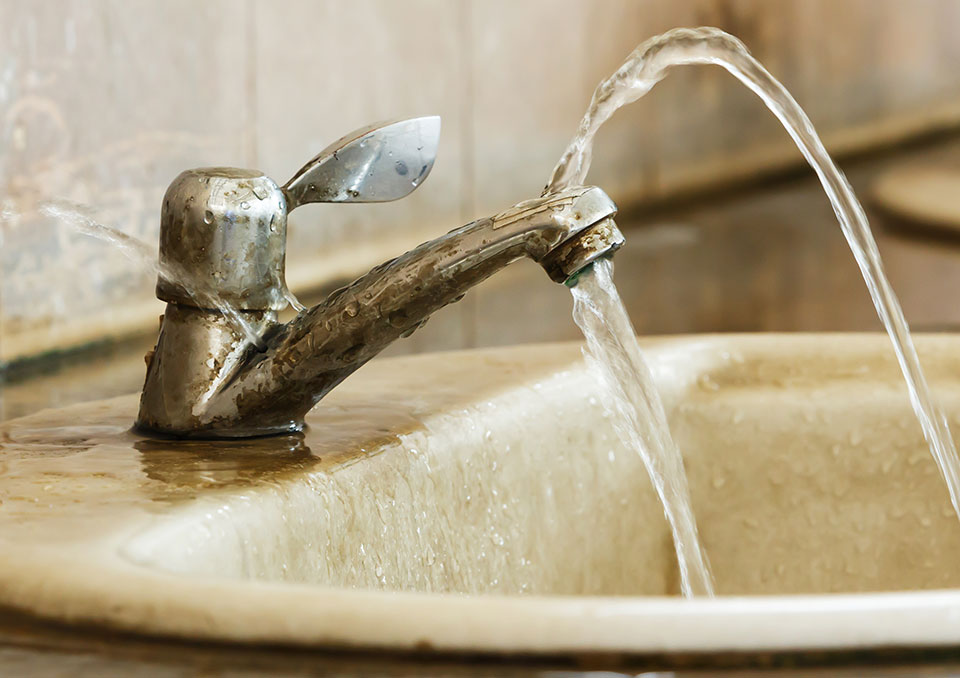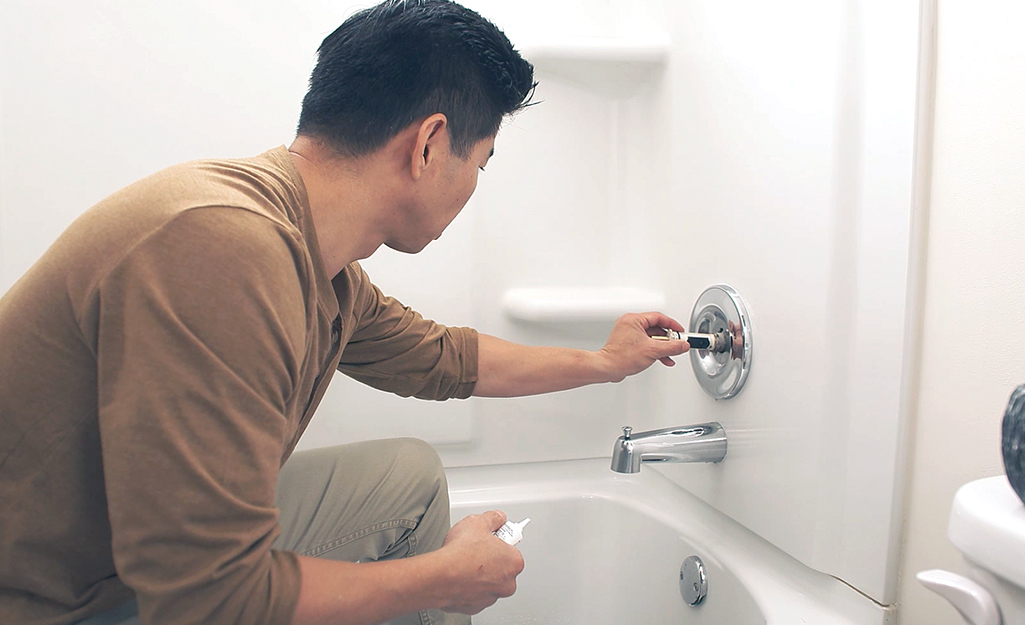What It's Vital to Resolve a Dripping Faucet
What It's Vital to Resolve a Dripping Faucet
Blog Article
We've stumbled on the article pertaining to Why It's Important to Fix Leaky Faucets down the page on the net and believe it made perfect sense to quickly share it with you on this site.

Leaking faucets may seem like a minor trouble, but their impact exceeds simply the annoyance of the noise. From drainage to sustaining unnecessary financial expenses and health and wellness threats, overlooking a dripping faucet can lead to various repercussions. In this short article, we'll explore why it's vital to resolve this typical house concern without delay and properly.
Wastefulness of Water
Ecological Effect
Dripping faucets add dramatically to water waste. According to the Environmental Protection Agency (EPA), a single tap leaking at one drip per second can throw away greater than 3,000 gallons of water each year. This not only pressures water sources but additionally impacts communities and wild animals based on them.
Step-by-Step Overview to Repairing a Dripping Tap
Tools Required
Prior to trying to repair a trickling faucet, collect the necessary tools, consisting of an adjustable wrench, screwdrivers, replacement components (such as washers or cartridges), and plumber's tape.
Common Faucet Issues and Their Solutions
Determine the sort of faucet and the particular problem triggering the drip. Typical issues consist of damaged washing machines, rusty shutoff seats, or damaged O-rings. Describe supplier guidelines or on the internet tutorials for detailed advice on repair services.
Financial Expenses
Increased Water Expenses
Past the environmental effect, dripping faucets can inflate water expenses significantly. The collected wastage with time equates into higher energy expenses, which might have been avoided with prompt fixings.
Possible Building Damages
In addition, long term trickling can bring about harm to fixtures and surfaces surrounding the faucet. Water buildup can create discoloration, corrosion, and also structural issues if left unattended, resulting in additional fixing expenses.
Health and wellness Concerns
Mold and Mildew Growth
The consistent presence of wetness from a dripping tap produces an optimal environment for mold and mildew and mildew development. These fungis not just compromise interior air quality yet likewise position health dangers, specifically for individuals with breathing conditions or allergies.
Waterborne Illness
Stagnant water in dripping taps can come to be a breeding ground for bacteria and various other pathogens, raising the danger of waterborne illness. Contaminants such as Legionella germs grow in stationary water, possibly resulting in serious health problems when consumed or breathed in.
Do it yourself vs. Expert Repair service
Benefits and drawbacks of Do It Yourself Repair Service
While some might try to fix a trickling tap themselves, DIY repair services feature their own set of difficulties. Without appropriate knowledge and devices, DIY efforts can worsen the issue or result in insufficient repair services, extending the issue.
Benefits of Employing an Expert Plumber
Employing an expert plumber guarantees that the underlying reason for the dripping tap is resolved properly. Plumbers possess the experience and tools to diagnose and fix faucet problems successfully, conserving time and decreasing the risk of further damage.
Environmental Obligation
Specific Contribution to Conservation
Taking obligation for fixing trickling taps lines up with wider efforts toward water conservation and ecological sustainability. Every person's actions jointly make a substantial effect on preserving valuable sources.
Sustainable Living Practices
By focusing on timely fixings and adopting water-saving routines, people contribute to lasting living methods that profit both present and future generations.
Preventive Measures
Routine Upkeep Tips
To prevent trickling taps, execute regular upkeep such as cleaning aerators, examining for leaks, and changing worn-out parts without delay. Furthermore, take into consideration setting up water-saving gadgets or upgrading to much more efficient fixtures.
Value of Prompt Services
Addressing dripping faucets as quickly as they're observed prevents additional water wastage and prospective damage, ultimately saving both water and cash in the future.
Influence On Residential Or Commercial Property Worth
Assumption of Well-Maintained Building
Keeping a home in good condition, consisting of dealing with maintenance concerns like leaking faucets, boosts its viewed value and value among possible buyers or tenants.
Impact on Resale Value
Features with properly maintained plumbing fixtures, consisting of taps, command higher resale values in the property market. Addressing dripping faucets can add to a favorable perception during home evaluations and arrangements.
Final thought
Attending to a leaking faucet surpasses plain benefit; it's a necessary step toward saving water, lowering financial expenses, and safeguarding wellness and property. Whether with do it yourself repair services or professional assistance, acting to take care of trickling taps is a little yet impactful way to advertise accountable stewardship of sources and add to a healthier, much more sustainable future.
How to Fix a Dripping or Leaky Faucet
A leaking faucet is one of the most common problems that homeowners encounter, but it being commonplace doesn’t make it any less annoying. The constant drip drip drip of a leaking bathtub faucet, showerhead, or sink tap can disturb your home’s serenity. Left neglected, a dripping faucet can also result in higher water bills and discoloration or mold growth in your sink or plumbing fixtures.
Fortunately, you don’t have to be a trained plumber to know how to stop a dripping faucet. With some basic tools, replacement parts, and a little patience, leaky faucet repair is a breeze. In this article, we’ll explain what causes dripping faucets and how you can fix them.
What Causes a Leaking Faucet?
Kitchen and bathroom faucets come in all manner of designs, but most involve some combination of valves, O-rings, seals, and washers. The O-ring is usually the weakest link, but any one of these pieces can wear down over time. Heat, moisture, temperature fluctuations, minerals, mold, and movement can contribute to warping and corrosion, breaking the watertight seal. This just comes with the territory of being a homeowner. Everything is always subject to wear and tear, and some component parts of your appliances and fixtures need to be replaced on occasion. At least replacement O-rings are cheap!
More rarely, dripping faucets can be a symptom of excessively high water pressure. Were this the case in your home, you would probably notice that the leak is not isolated to one faucet. Water pressure issues are harder to resolve on your own. We recommend contacting a professional plumber if you suspect your water pressure is too high.
How to Fix a Dripping Faucet
Pipe wrench or monkey wrench Allen wrench set Screwdrivers Old towel or rag Shut off the water.
Before you do anything, you need to turn off the water to keep from drenching your kitchen or bathroom. You should find a valve under the sink and against the wall. Once you’ve turned this valve, try turning the faucet on to confirm that the water source has been cut off.
If you can’t locate your local valve for the faucet you’re working on, you can always shut off the water to the house at the main valve. Of course, this will prohibit anyone from using the sinks, showers, or toilets while you’re working on the faucet that’s giving you trouble.
Plug or block the drain.
You’ll be disassembling the faucet and removing some small bits of hardware. Plug the drain with a stopper or rag to avoid the possibility of a small screw falling into your P-trap.
Take apart the faucet assembly.
There are several varieties of kitchen and bathroom faucets, each with its own manner of assembly. For detailed instructions on how to disassemble your faucet, you can refer to the fixture’s manual or contact the manufacturer. If you know whether you have a ball, disc, cartridge, or compression faucet, you can find detailed schematics online.
In general, you need to begin by removing the faucet handles. You might notice a small screw that you’ll need to remove with a screwdriver or Allen wrench. If you don’t see any visible securing hardware, it’s likely hidden under a decorative cap that can be unscrewed or popped off with flathead screwdriver.
Remove each piece methodically, consulting a schematic when necessary. Take notes or arrange the pieces in such a way to make it easier to correctly reassemble the faucet later.
Remove the cartridge.
Once you’ve removed the handles and securing hardware, you should be able to remove the valve cartridge or stem. Some cartridges will slide right out. Other faucet models will require you to loosen a nut with a pipe wrench before you can remove the valve stem.
Examine the exposed hardware.
With the cartridge or stem removed, inspect the component parts. Check the rubber O-rings for wear and tear. Also examine the seat washer for corrosion or other damage. These pieces are usually the responsible parties for a dripping faucet, but it’s worth inspecting the other component parts while you have the faucet disassembled.
Find replacement parts.
Once you’ve identified which faucet component has failed, find an identical replacement. Your local hardware store should have O-rings, seat washers, and other standard components in stock. If you have a luxury or uncommon faucet, you may have to contact the manufacturer for a replacement part.
It’s a good idea to take your old parts with you to the hardware store so you can compare them with the store’s inventory and be sure you’re purchasing the correct replacement.
Reassemble the faucet.
With your new parts in hand, reconstruct the faucet and handles. Don’t be tempted to overtighten screws or nuts. You might think this could create a better seal, but it can instead damage or bend a delicate part of the assembly and create a new problem for you.
Turn on the water and test the faucet.
The only thing left to do is test your work. Unplug the sink, turn the water back on, and try the faucet. Congratulate yourself on a job well done!
https://www.libertyhomeguard.com/how-to-fix-a-dripping-or-leaky-faucet/

As a serious reader on Leaky Faucets: Why They Happen & What to Do About Them, I think sharing that short article was really helpful. Please take a moment to share this content if you liked it. I treasure your readership.
Report this page